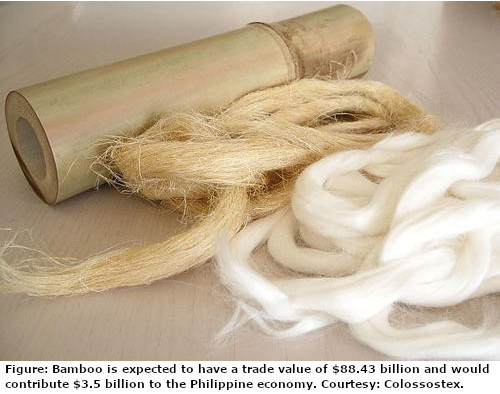
Category: SUSTAINABILITY
Country: Philippines
Region: Asia
By Nurnahar Akter Tania
Textile Today
19th September, 2024 3:26 PM
Cynthia Villar, the Chairperson of the Senate Committee on Agriculture said bamboo has the potential to support sustainability in economic growth as it grows very fast and can be grown easily in different climate conditions and altitudes.
Earlier this year, Cynthia Villar urged the public and concerned government agencies to continue propagating bamboo due to its many economic and ecological benefits.
By 2030, bamboo is expected to have a trade value of $88.43 billion and would contribute $3.5 billion to the Philippine economy.
September is recognized as Bamboo Month in the Philippines, and this year there will be a special exhibition on uses in clothing called Kawayarn, which is a combination of the words "yarn" and "kawayan," the Tagalog term for bamboo.
The Bamboo Textiles Initiative, a research project, is also underway at the country’s textile research institute, Department of Science and Technology - Philippine Textile Research Institute (DOST-PTRI).
The program is investigating methods to extract fiber from bamboo stalks using chemical and mechanical processes. This yields a fiber having specific properties that are very different from the more common viscose-type processing of bamboo into manmade cellulosic yarns.
Notably, utilizing bamboo as a textile will help the local textile industry and spur development in the countryside, as it has at least 35 percent textile fiber recovery unlike other sources of fiber, which have only 2 percent.
Thus, a reliable source of sustainable textile fiber is available throughout the nation. Bamboo fibers may be used to make household textiles and clothes and can also be utilized to make nonwoven materials like bags and shoes.
For this reason, Bamboo fibre is now included in the Republic Act 9242, also known as the Philippine Tropical Fabrics Law, which prescribes the use of local fibers and fabrics for the uniforms of public officials and employees.
It thus joins the ranks of piña, abaca and banana fibres, as per the local newspaper Business World.
Courtesy: Textiletoday.com
Copyrights © 2025 GLOBAL TEXTILE SOURCE. All rights reserved.